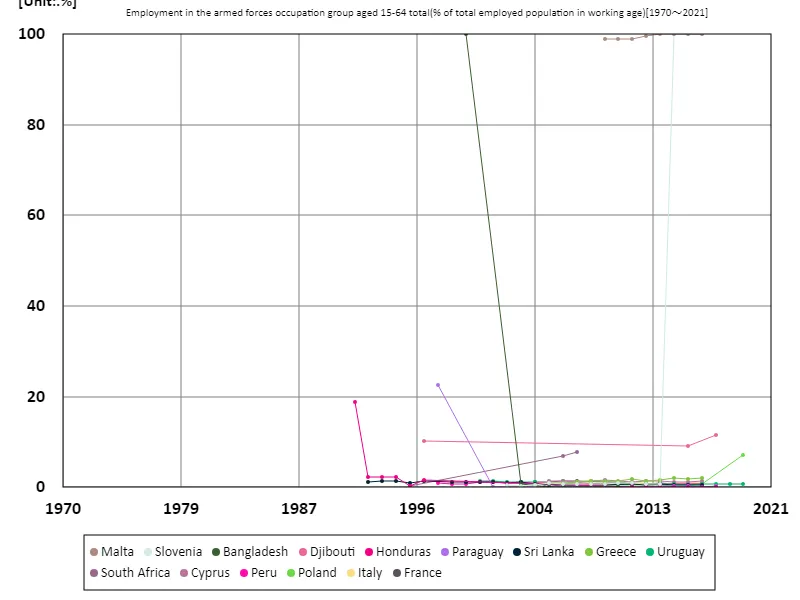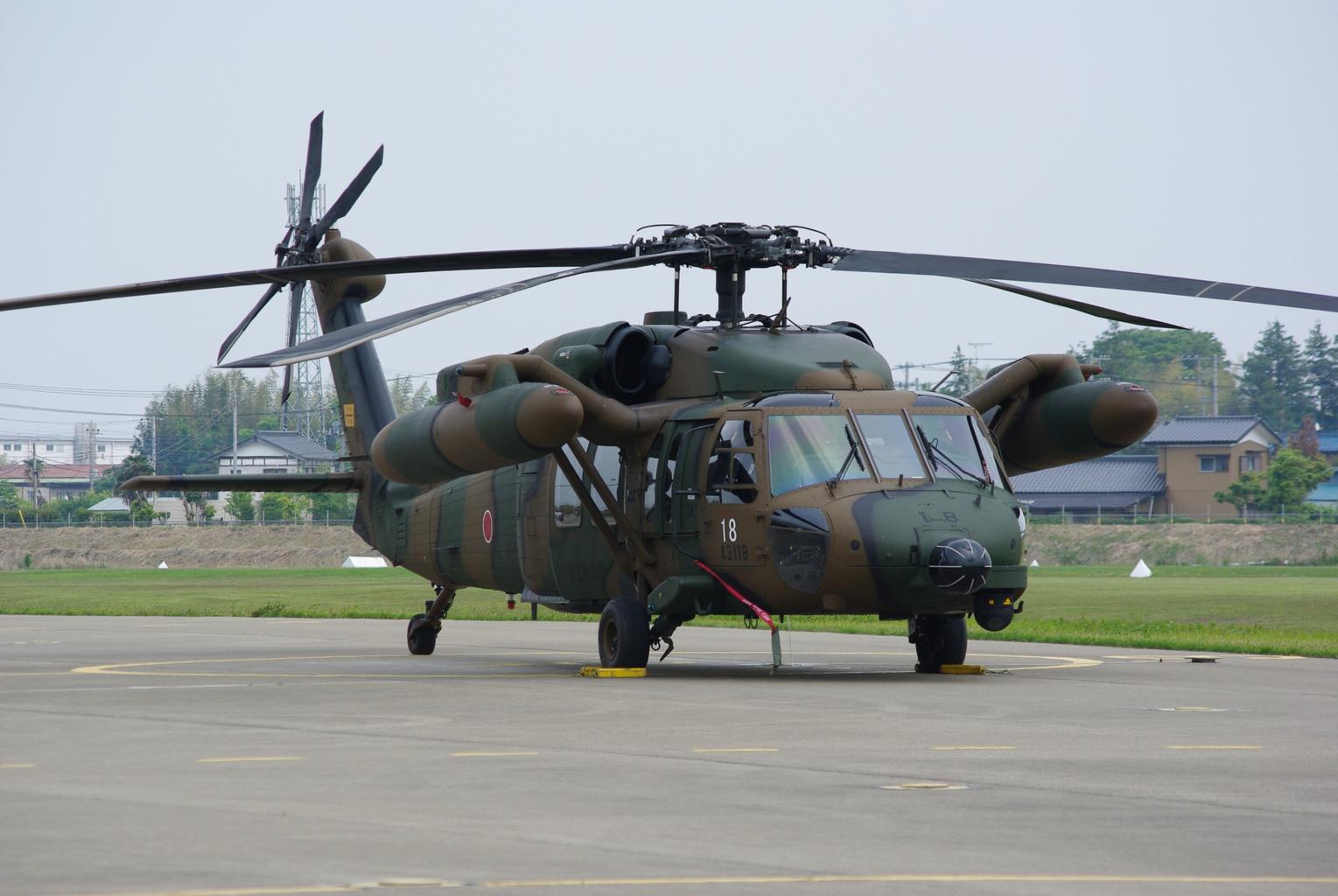- Abstract
- Employment rate for all 15-64 year olds in the military-related sector (percentage of working-age population)
- Employment rate in military-related sector for all 15-64 year olds (percentage of working-age working population) (Worldwide)
- Employment rate for military-related sector for all 15-64 year olds (percentage of working-age working population) (Worldwide, latest year)
- Reference
Abstract
Uruguay’s military employment rate of 693% in 2019 is an anomaly, as it typically does not exceed 100%. Generally, employment rates in military-related sectors depend on a country’s military spending and security policies, as well as its special economic and political circumstances. For example, military-related employment fluctuates due to war, conflict, and regional security situations. As a general rule, countries with a lot of war and military intervention tend to have higher employment rates, while peaceful and stable countries tend to have relatively lower employment rates. In some small and developing countries, military employment can be a significant part of the economy, but it is usually a small percentage of overall employment. It is important to check whether the data is accurate or whether it represents unusual circumstances.
Employment rate for all 15-64 year olds in the military-related sector (percentage of working-age population)
Looking at data from 1991 to 2019, fluctuations in employment rates in military-related sectors are closely linked to a country’s political and economic situation. Bangladesh’s unusually high figure of 100% in 1999 may be due to doubts about the interpretation of certain data and the way they are recorded. Generally, a 100% employment rate in the military-related sector is unrealistic and likely due to some unusual circumstances or data processing issues. Overall, employment rates in military-related sectors fluctuate depending on the effects of war or conflict or a nation’s defense policy. During times of war, military-related employment in a country typically increases and decreases during times of peace. Additionally, as the economy grows and industries diversify, employment rates in military-related sectors may become relatively lower. In recent years, as wars and conflicts have decreased, military-related employment rates have declined in many countries. This is due to cuts in military spending and the development of the private sector. The significant decline in a country like Bangladesh compared to its peak represents a natural progression of economic development and security changes.


The maximum is 100%[1999] of Bangladesh, and the current value is about 69.8m%
Employment rate in military-related sector for all 15-64 year olds (percentage of working-age working population) (Worldwide)
An analysis of military-related employment rates based on data from 1991 to 2019 reveals several notable features and trends. The 100% figure recorded by Bangladesh in 1999 is an unusually high figure for normal military employment and may be subject to problems with data interpretation and recording methodology. In reality, it is highly unlikely that military-related employment will reach 100% of the total workforce. In general, employment rates in military-related sectors are strongly influenced by a country’s defense policy, economic situation, and international security situation. In countries experiencing ongoing wars or conflicts, military employment tends to increase, but in times of peace, economic stability, and reductions in military spending, military-related employment rates decline. The current decline in military-related employment in Bangladesh to 69.8% compared to its peak may be due to changes in the country’s security environment and economy, or a review of military strategy. Overall, employment rates in military-related sectors fluctuate with national security situations and economic developments, and generally tend to decline as military activity declines and the economy diversifies.


The maximum is 100%[1999] of Bangladesh, and the current value is about 69.8m%
Employment rate for military-related sector for all 15-64 year olds (percentage of working-age working population) (Worldwide, latest year)
Looking at employment rates in military-related sectors based on 2021 data, the highest overall figure is Gambia at 1.43%, while the average is 798%, which is clearly an anomaly. Military-related sector employment typically represents a very small percentage of the working-age population, often less than 1%. Therefore, the average value of 798% may be erroneous or there may be serious problems with recording or interpretation of the data. In general, employment rates in military-related sectors depend on a country’s defense spending and security situation, and tend to rise in times of war and high military tensions and fall in times of peace. In particular, military employment rates are typically a very small percentage of the total working population, and the 2.39% total is likely to be realistically low. The Gambia’s figure of 1.43% indicates a relatively low military-related employment rate and is in the moderate range compared to other countries. Due to the anomalies in the overall averages and totals, these figures require revision and reconfirmation of the data in order to interpret them accurately.


The maximum is 1.43% of Gambia, the average is 798m%, and the total is 2.39%



Comments